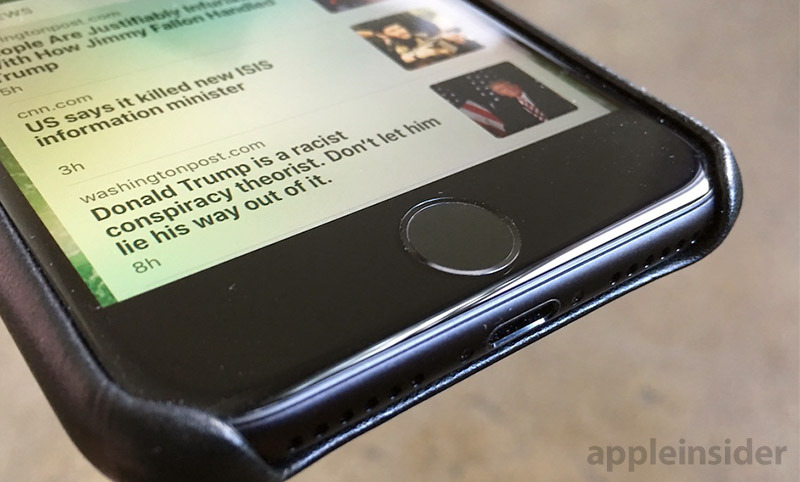iPhone 7 solid-state home button works on capacitive touch, gloved users beware
Last updated
With iPhone 7, Apple updated its iconic home button from a mechanical push-button design to a solid-state sensor stack, meaning it requires direct contact with skin, or a capacitive glove, to operate.
First noted by Myke Hurley on Twitter, the new iPhone's Touch ID home button is inoperable unless it makes contact with a conductive object, for example a user's thumb. It seems Apple has not implemented pressure-sensing hardware as part of the home button component and is instead relying solely on capacitive sensing via the stainless steel electrode ring surrounding Touch ID.
In essence, the home button acts like iPhone's screen, AppleInsider has confirmed.
This could cause problems for device owners once winter rolls around. With a physically depressible home button, gloved hands can wake iPhone, return to home, invoke Siri and perform other OS actions with ease. Not so with iPhone 7.
Users who don't own capacitive gloves will need to invest in a pair or be forced to remove their non-conductive hand muffs for the most menial of tasks. Apple's iOS 10 operating system solves part of the problem in that users can see notifications and the tie by enabling a "raise to wake" function, but therein lies another potential issue: unlocking.
In order to navigate to iPhone's passcode entry pane, the preferred unlock method of begloved iPhone owners everywhere, the new lock screen design eschews the tried and true "swipe to unlock" gesture in favor of a system that requires a home button press. As with previous iOS versions, those with capacitive gloves will be fine — a screen swipe requires capacitive contact — but owners of regular gloves will likely run into trouble.
Apple announced iPhone 7 at a special event earlier this month. A major change to the iPhone lineup, the new solid-state home button is powered by Apple's Taptic Engine haptic feedback mechanism, which works to simulate a button press. The system is akin to the Force Touch trackpad introduced with MacBook Pro last year.
Members of the media, AppleInsider's Daniel Dilger among them, were invited to test out the new hardware in a hands-on area, where some commented that the Taptic Engine solution feels nothing like the physical home button iPhone faithful have come to love. It seems a lacking tactile experience is not the button's only shortcoming.
 Mikey Campbell
Mikey Campbell














 Amber Neely
Amber Neely
 Thomas Sibilly
Thomas Sibilly
 AppleInsider Staff
AppleInsider Staff
 William Gallagher
William Gallagher
 Malcolm Owen
Malcolm Owen
 Christine McKee
Christine McKee










64 Comments
Awesome job at inserting the politics into the story (the photo)
Capacitive gloves have been around for quite a while now. I just tried the button through my shirt. it worked fine.
Please leave politics out of your posts, from EITHER side. Man that's a bad photo you injected. Bad form!
AI use the same photo in there earlier article today about unboxing. Geez.
AI, pretty please, with sugar on top, just be a tech blog.